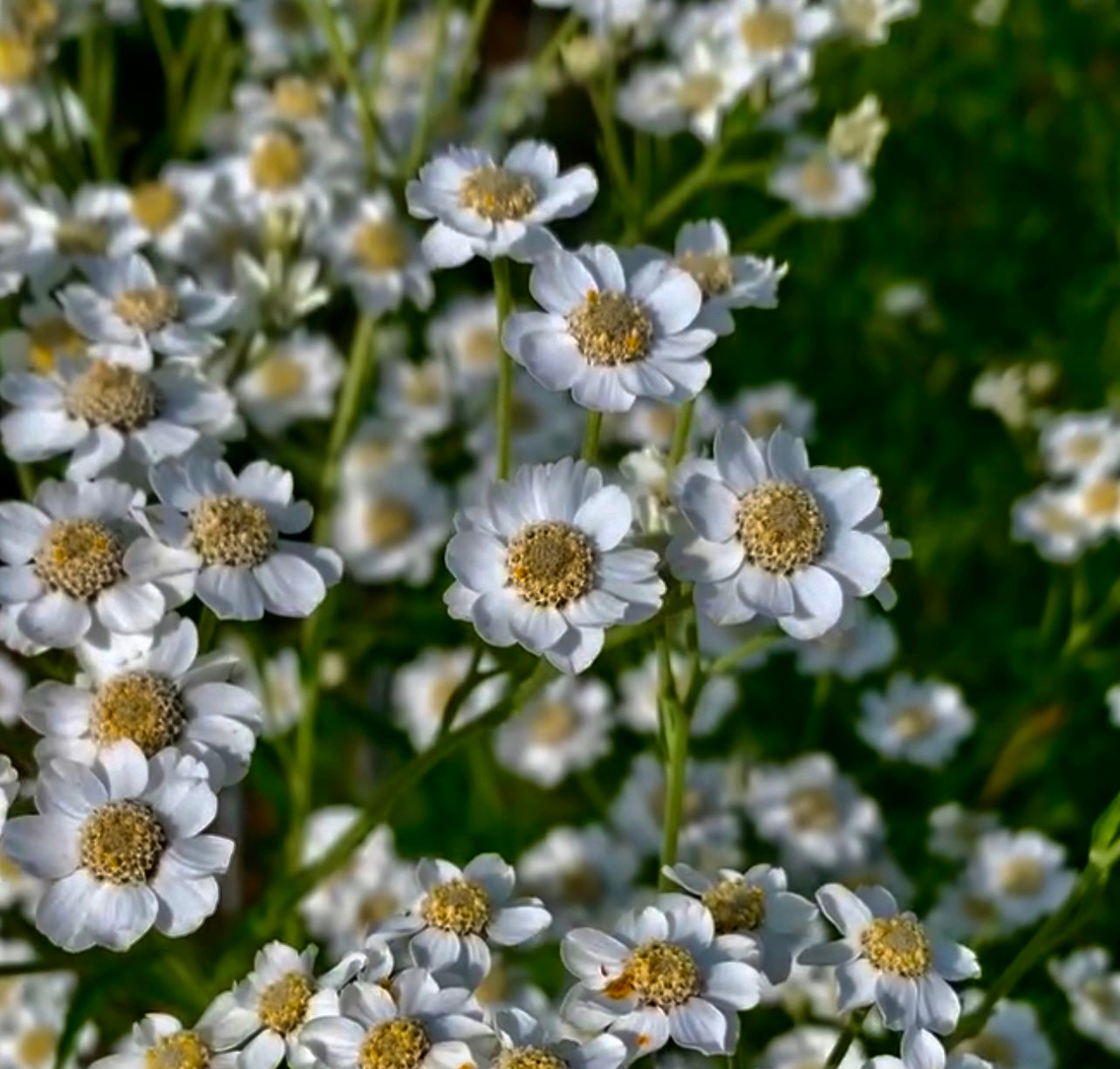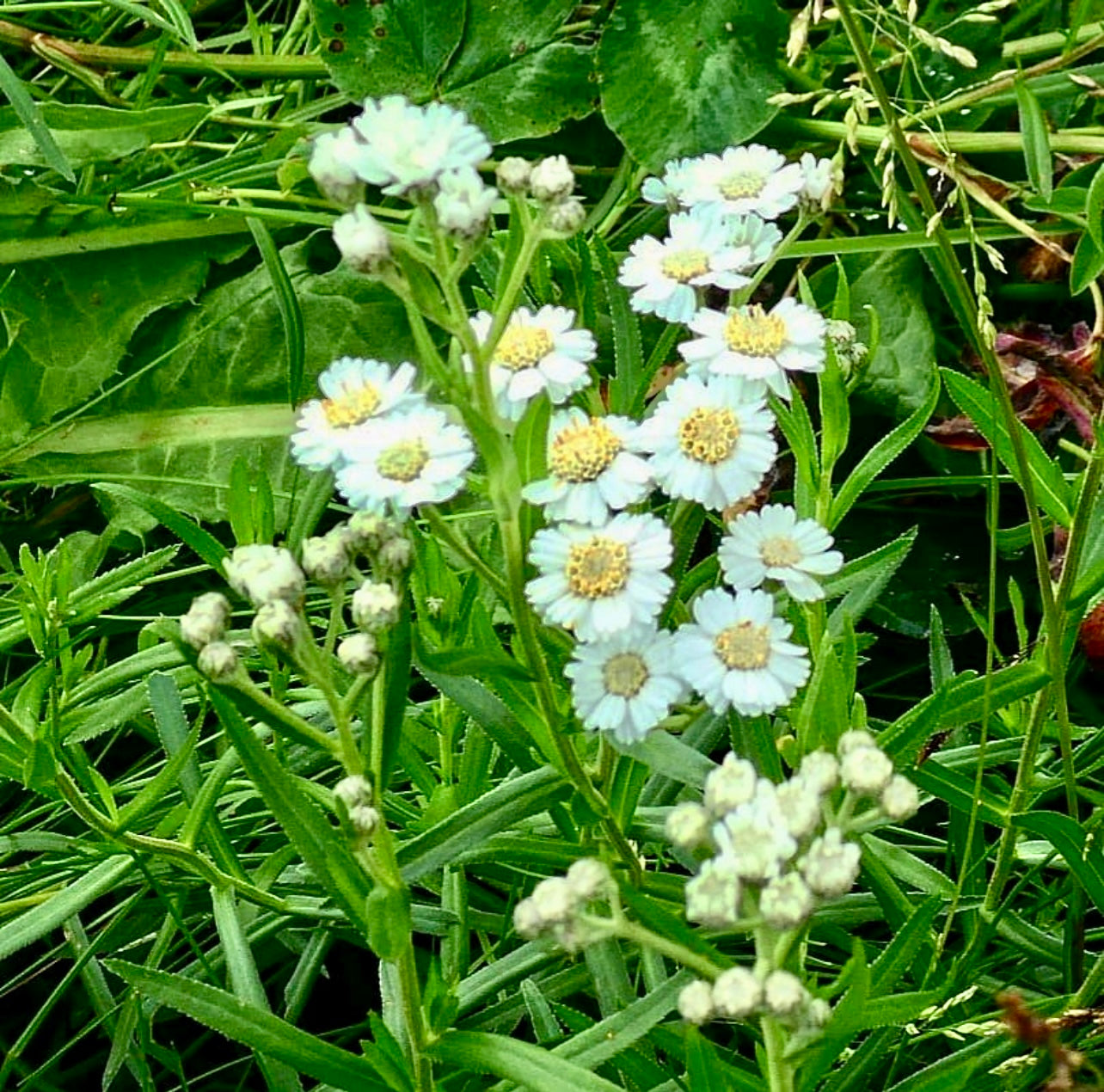Sneezewort (Achillea ptarmica)
Sneezewort (Achillea ptarmica)
Couldn't load pickup availability
Why We Grow It
Why We Grow It
Achillea ptarmica is an excellent addition to food forests and integrated perennial plantings due to its ability to attract pollinators, stabilize soil, and provide habitat for beneficial insects. It brings valuable minerals to the soil surface in a bioavailable form. Its tolerance for poor soils and drought conditions makes it a resilient choice for degraded landscapes or areas prone to erosion. Can help outcompete weeds at the base of your other taller perennials.
How the Plant Grows
How the Plant Grows
Sneezewort grows as a clump-forming perennial with upright stems and finely textured foliage. In summer, it produces clusters of small, white flowers that remain in bloom for several weeks, adding visual interest and ecological benefits. The plant spreads gradually through rhizomes, creating dense, attractive ground cover over time.
Plant Size
Plant Size
Size at Maturity- Herbaceous Layer. Grows to 18-24 inches tall with a spread of 12-18 inches
Current Size- Root clump, enought to plant a 4 square foot weed free patch.
Additional Info
Additional Info
Achillea ptarmica has a long history of use in European herbal medicine, particularly for treating colds and respiratory issues—hence the name "Sneezewort." A preparation is made to snuff up the nose and cause sneezing. It is a type of yarrow so can be considered a dynamic mineral accumulator. Its flowers are highly attractive to pollinators, supporting bees and butterflies in ecological systems. In permaculture and agroforestry, it serves as a beneficial companion plant, improving soil health with its extensive root system and deterring pests. Its low-maintenance nature and ornamental value also make it a popular choice for naturalized gardens and wildlife corridors.
Achillea ptarmica, commonly known as Sneezewort or Pearl Yarrow, is a hardy perennial celebrated for its feathery foliage, delicate white flowers, and versatility in temperate climates as an easy growing groundcover. A resilient and low-maintenance plant, it thrives in diverse conditions, contributing to pollinator support and as a medicinal herb for your own apothecary. Spreads from underground runners but not can be easily managed. Great for pairing with shrub, understory and overstory trees.
Share


Plant Highlights
-

Water
Drought-tolerant once established; prefers consistent moisture during establishment.
-

Pollination
Self-fertile; pollinated by insects, particularly bees and butterflies
-

Soil
Thrives in well-drained soils; tolerates sandy, loamy, or clay soils with a slightly acidic to neutral pH
-

Years to Bear
Produces seeds in 2-3 years after establishment. Blooms first year. Digup roots for further division 1-2 years
-

Hardiness
Zone 3, tolerating temperatures as low as -40°C.
-

Solar
Prefers full sun but tolerates partial shade.
Subscribe to our emails
Lots of Free Growing Info. Be the first to know about new plants and exclusive discounts.








